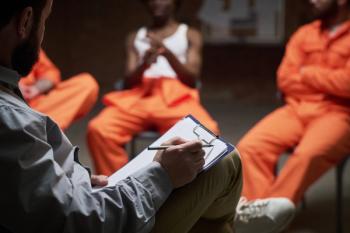
- Psychiatric Times Vol 36, Issue 1
- Volume 36
- Issue 1
Moving Beyond “Motives” in Mass Shootings
Focusing on concerning behaviors may better assist with prevention than sensationalizing individual perpetrators’ motives.
COMMENTARY
Dr Knoll is Director of Forensic Psychiatry and Associate Professor of Psychiatry at SUNY Upstate Medical University in Syracuse, NY. He is Editor in Chief Emeritus of Psychiatric Times (2010 to 2014). Dr Pies is Professor in the psychiatry departments of SUNY Upstate Medical University, Syracuse, NY and Tufts University School of Medicine, Boston. He is Editor in Chief Emeritus of Psychiatric Times (2007 to 2010).
As psychiatrists, our stock-in-trade is understanding our patients’ motives-and in general, understanding what makes people “tick.” So, it may seem surprising that when it comes to mass shootings, such as the horrific Thousand Oaks bar massacre, we feel frustrated by the media’s obsession with the shooter’s “motives.” The same goes for investigators of such attacks, who seem fixated on determining the shooter’s “motive.”
To be sure: after such tragedies, it’s simply human nature to ask, “Why did the shooter do it?” And even in the most heinous and difficult to fathom crimes, there is motive. The popular myth that the perpetrator of a mass shooting “just snapped” has been debunked.1 Furthermore, the determination of “motive” is often important in criminal law. Essentially, motive (from the Latin word motivum, meaning “moving cause”) is what moves a person to commit a certain act. In US criminal law, there is no requirement to prove motive to reach a verdict. However, motive may be shown by the prosecution in order to prove that a defendant had a plausible reason to commit the crime.
Technically, motive is distinct from intent, although the two are often intertwined. (Motive has been defined as “the reason that nudges the will and prods the mind to indulge the criminal intent.”2) Thus, a person who knowingly puts a loaded gun to someone’s temple and fires it clearly had the intent to kill or grievously wound the person, but may have done so for a number of motives (eg, revenge, jealousy, racial animus).3 Motive becomes critical in, for example, the prosecution of hate crimes and acts of terrorism.4
Notwithstanding the legitimate role of “motive,” we believe that the ritualized hunt for the shooter’s motive is usually an exercise in fruitless speculation and wasted resources. When pursued by the media, this quest almost always lacks the necessary data to reach a sound determination. Moreover, these exercises rarely yield any useful or actionable information that would help reduce the likelihood of future mass shootings. Almost invariably, we learn little more than what we have known for many years-that mass shooters are typically (though not always) angry, aggrieved, emotionally unstable, or socially isolated males who are seeking retribution or revenge for perceived mistreatment, rejection, or humiliation.5
AS A SOCIETY, we must do better than this. We need to focus on:
1 Recognizing the major risk factors that raise the risk of violence in general;
2 Identifying and reporting observable “red flag” behaviors that point toward imminent, directed violence;
3 Reducing the likelihood that would-be killers can easily get hold of lethal weapons.
Is there a “profile” for mass shooters?
The most important risk factor for future violence in general is a previous history of violence.
Other prominent risk factors include, but are not limited to6,7:
• A history of substance abuse
• A history of having been abused or bullied
• Witnessing violence between parents
• A preoccupation with weapons or death; poor control of anger
• Social isolation
Unfortunately, these risk factors are far too prevalent in the general population to be of practical use in identifying would-be shooters and may not apply to mass shooters. For example, there is often no history of serious past violence in these individuals. Furthermore, neither the Secret Service nor the FBI has found a specific psychological profile or checklist of personality traits that can be used to predict who will become a mass shooter.8
And yet, almost invariably, there is uninformed speculation in the media regarding the role of “mental illness” in mass shootings. First, it bears repeating that there is only a weak correlation between violence and mental illness per se.9 However, untreated mental illness is a significant risk factor for violence; ie, “. . . a small number of seriously mentally ill individuals do become violent when they are not treated . . .”10 With regard to mass shooters specifically, there is little documented clinical evidence linking these perpetrators to major mental illnesses like schizophrenia or bipolar disorder. Indeed, no research has reliably established that most mass murderers and shooters are psychotic or suffering from a serious mental illness.5
In fact, a recent FBI report on 63 active shooters (2000-2013) found that only 25% (n = 16) of subjects had ever had a mental illness diagnosis; and of those, only 3 had a diagnosis of a psychotic disorder.11 The FBI report pointedly notes that, “. . . formally diagnosed mental illness is not a very specific predictor of violence of any type, let alone targeted violence;” and, further, that “declarations that all active shooters must simply be mentally ill are misleading and unhelpful.” On the other hand, some evidence suggests that many mass shooters have been preoccupied with feelings of social persecution and fantasies of revenge for some type of perceived injustice.11,12
While the FBI report did not directly assess the shooters’ motives, it did identify various grievances in 79% of the active shooters, mainly in the realm of interpersonal or employment actions perceived to be directed against the shooter (total of 49%). The report also identified “precipitating events” in 44% of the shooters who had an identifiable grievance (eg, an adverse ruling in a legal matter, a “romantic rejection,” job loss). However, the report implied that while these precipitants may have accelerated the timing of the shooting, they did not “set the course.” In any case, neither the identified grievances nor the putative precipitants are specific enough to be useful predictors of a shooting; after all, millions of people probably experience the sort of grievances, rejections, and losses noted in the report.
One important limitation of the FBI report was the absence of formal psychological autopsies. These involve collecting all available information on the deceased via structured interviews of family members, relatives, or friends, and attending health care personnel, as well as collecting data from psychiatric records and other documents.
Watching for worrisome behaviors
Rather than speculating on the shooters’ motives, the FBI report emphasizes the observable, pre-attack behaviors of would-be shooters, and how alert citizens can communicate their concerns to appropriate authorities. Warning signs include, among others, “leakage of violent intent” to others; making threats; and acting aggressively. (“Leakage” occurs when a person intentionally or unintentionally reveals clues to a third-party about thoughts, attitudes or intentions suggesting the intent to commit a violent act.11)
The FBI found that, over time, the majority of perpetrators demonstrated at least 4 to 5 concerning behaviors that were observable to others, such as problematic interpersonal interactions, or communicating their violent intent (leakage)-either through verbal or physical behavior. Those under age 18 demonstrated such behaviors to school peers or teachers, while those over 18 demonstrated the behaviors to spouses or domestic partners. This phenomenon of leaking violent intent is consistent with findings by the US Secret Service that found that over three-quarters of perpetrators made concerning communications and/or elicited concern from others before carrying out their attacks.13
It is in the area of paying attention to warning signs and appropriate reporting to authorities that we may make the biggest gains in preventing mass shootings. Indeed, the FBI report suggests that by means of recognizing such red flags we may be able to head off potential shootings. Specifically, in 13 states, initiating an “extreme risk protection order” allows a judge to temporarily restrict a dangerous individual’s access to firearms, possibly preventing an imminent shooting.14
The following Case Vignette is an example of “what went right” in averting a potential mass shooting. It involves a 22-year-old international student, here on a temporary visa.
CASE VIGNETTE
Mr Z had attempted to buy an AR-15-the semiautomatic weapon of choice for most mass shooters-at a local gun shop. For several reasons-including Mr Z’s inquiring about high-capacity shotguns for hunting-the gun shop owner became suspicious and contacted the sheriff’s office. In doing so, the gun store owner became the hero who appropriately alerted law enforcement. A series of discoveries uncovered Mr Z’s history of alcohol abuse, depression, suicidal thinking, anger problems, and feeling that he might lose control or act violently. This led authorities at the University to fill out the paperwork for New York’s SAFE Act, which bans the sale of most semi-automatic weapons, and prevents people from buying a gun if a mental health professional determines that individuals might harm themselves or others.
Subsequently, fellow students shared screenshots of messages they had seen Mr Z post in a social media group. These revealed that Mr Z felt compelled to buy a gun and a bulletproof vest, and to practice shooting. Police obtained a search warrant for Mr Z’s apartment, where they found high-powered optics, scopes, ammunition, targets from shooting ranges, receipts from shooting ranges, and similar equipment. Ultimately, Mr Z’s visa was revoked, and he was deported. Further investigation uncovered a series of texts between Mr Z and his girlfriend, in which he openly talked about wanting to shoot people.
Moving away from motives to preemption and prevention
We hope that cases such as this, in concert with the FBI’s recommendations, will shift the focus of the press and other parties from sensationalizing motives to observing and reporting ominous behaviors. We would include suicidal threats or behaviors in this category, since almost half of the shooters in the FBI study had suicidal ideation or engaged in suicide-related behaviors at some time prior to the attack.11
Through collaboration between the public and responsible authorities, we stand a chance of preempting at least some planned shootings. Indeed, one study of thwarted mass homicide plots found that friends, family members, and acquaintances of threateners-as well as the general public-all played an important role in discovering and thwarting homicidal plots.15 To be sure, there is a great deal of room for improvement in this area. For example, the FBI report found that only about 41% of persons reported their concerns about potential shooters to law enforcement authorities.
While solid, evidence-based methods of preventing mass shootings are still lacking, we believe that progress will come through work on a number of fronts. First, better reporting of ominous behaviors and careful use of extreme risk protection orders may avert at least some mass shootings. Second, the use of Threat Assessment and Management (TAM) teams in our schools may also help preempt planned attacks. TAM teams are interdisciplinary groups of professionals that include law enforcement, mental health providers, and other security stakeholders, collaborating in a structured effort to accurately assess and mitigate the risk of violence.16
Finally, we believe-albeit speculatively-that the media can contribute to a reduction in mass shootings by refusing to publicize and sensationalize mass shooters by dwelling on their supremely resentful, narcissistic motives. There is reason to believe that such notoriety may encourage copy-cat killers, bent on outdoing the previous shooter.17,18 Surely, proactively uncovering homicidal plots and removing the lethal means of carrying them out makes far more sense than retroactively speculating on a shooter’s motives.
This article was originally published on 11/16/18 and has since been updated.
Disclosures:
The authors report no conflicts of interest concerning the subject matter of this article.
References:
1. Meloy JR.The seven myths of mass murder. Violence Gend. 2014:3;102-104.
2. United States v. Benton, 637 F.2d 1052, 1056-57 (5th Cir. 1981)
3. Frederick Kramer for the Southeastern White Collar Crime. Intent and Motive Are Different: Except When They Aren’t. September 10, 2015.
4. Morsch J. The problem of motive in hate crimes: the argument against presumptions of racial motivation. J Crim Law Criminol. 1991:82.
5. Knoll J. Mass Murder: Causes, Classification, and Prevention. Psychiatr Clin North Am. 2012:35:757–780.
6. Rozel JS, Jain A, Mulvey EP, Roth LH: Psychiatric assessment of violence. In: Sturmey P (Ed). The Wiley Handbook of Violence and Aggression. Hoboken, NJ: Wiley; 2017.
7. Fazel S, Smith EN, Chang Z, Geddes JR. Risk factors for interpersonal violence: an umbrella review of meta-analyses. Br J Psychiatry. 2018;213:609-614.
8. O’Toole ME. The school shooter: A threat assessment perspective. Quantico, VA: FBI Critical Incident Response Group. National Center for the Analysis of Violent Crime; 1999.
9. Stuart H. Violence and mental illness: an overview. World Psychiatry. 2003;2:121-124.
10. Torrey EF. Stigma and violence: isn’t it time to connect the dots?. Schizophr Bull. 2011;37:892-896.
11. Silver J, Simons A, Craun S. A study of the pre-attack behaviors of active shooters in the United States between 2000 and 2013.
12 Knoll JL IV; Annas GD: Mass shootings and mental illness. In: Gold LH, Simon RA. Psychiatry and Mental Illness. Arlington, VA: American Psychiatric Publishing; 2016.
13. National Threat Assessment Center. Mass Attacks in Public Spaces – 2017. U.S. Secret Service, Dept. of Homeland Security. 2018.
14. Giffords Law Center. Extreme Risk Protection Orders.
15. Sarteschi CM. An examination of thwarted mass homicide plots and threateners. Aggression and Violent Behavior. 2016;30:88-93.
16. Report of the Onondaga Country School Safety Task Force, Report Compiled by Dr. Jaclyn Schildkraut, SUNY Oswego Aug. 13, 2018.
17. Meindl JN, Ivy JW. Reducing media-induced mass killings: lessons from suicide prevention. Am Behav Sci. 2018;62:242-259.
18. Pies RW. After Las Vegas, The Danger of Copy-Cat Killers. Psychiatric Times. 2017;34(11).
Articles in this issue
almost 7 years ago
Safe Communication About Suicide in the Digital Agealmost 7 years ago
Walking Out of the Darknessalmost 7 years ago
Zero Suicide: The Dogged Pursuit of Perfection in Health Carealmost 7 years ago
Child Psychiatrists: On the Front-lines of Neuropsychiatryalmost 7 years ago
In the Room With Climate Anxiety: Part 2almost 7 years ago
Use of Psychodrama With Adolescentsalmost 7 years ago
The Dog That Did Not Barkalmost 7 years ago
Sting Meets Elton and LeonardNewsletter
Receive trusted psychiatric news, expert analysis, and clinical insights — subscribe today to support your practice and your patients.













